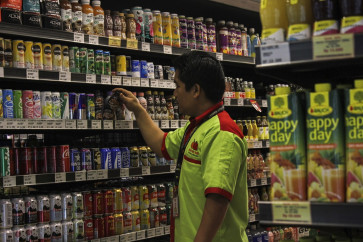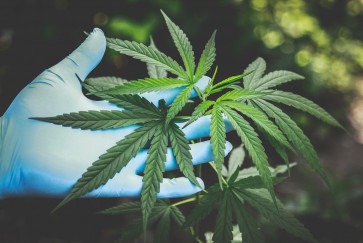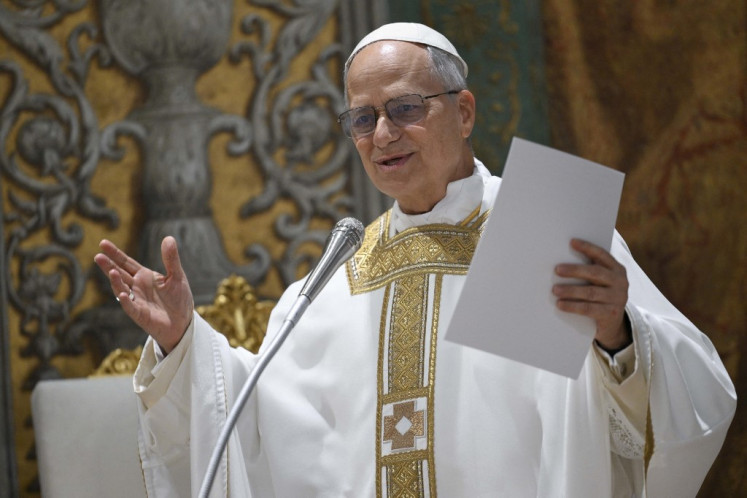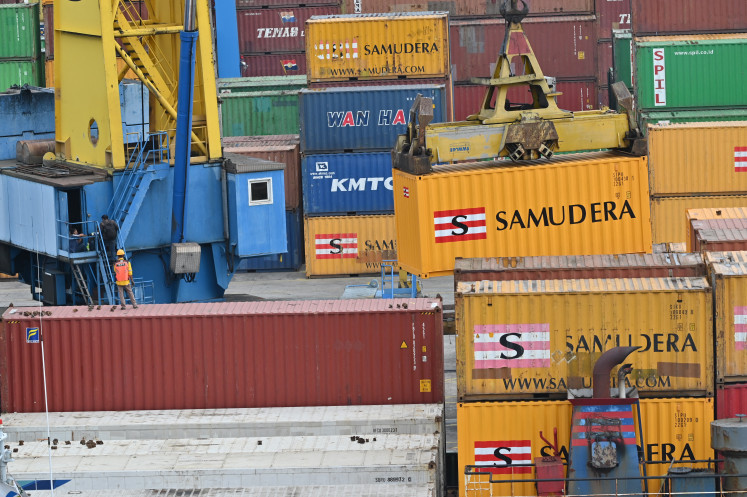Indonesia’s green energy outlook promising despite slow growth
International energy experts believe the share of renewable energy in Indonesia will exceed that of fossil fuel within the next 25 years despite slow progress in ongoing efforts to promote clean energy
Change text size
Gift Premium Articles
to Anyone

International energy experts believe the share of renewable energy in Indonesia will exceed that of fossil fuel within the next 25 years despite slow progress in ongoing efforts to promote clean energy.
Bloomberg’s latest New Energy Outlook (NEO) predicts Indonesia will generate more renewable energy than fossil fuel by 2045 as green technology becomes widely available.
Bloomberg New Energy Finance (BNEF) head Jon Moore said renewable energy and fossil fuel would each make up about 50 percent of the country’s energy mix within the next two decades. He predicted green energy would take off by 2045 and significantly exceed fossil fuel by 2050.
“At first, Indonesia will develop geothermal and hydropower plants. Cheaper wind and solar generators will eventually complement this,” he said in a seminar on green energy in Jakarta on Monday.
NEO data suggests that from 2021 to 2025 Indonesia will invest around US$10 billion in geothermal energy, while from 2026 to 2050 the country will primarily invest in solar panels.
Moore said Indonesia would see a $288 billion investment from 2018 until 2050, part of the $611 billion investment estimated for Southeast Asia as a whole. Indonesia is expected to invest about 48 percent of this amount in solar panels, 11 percent in hydropower and 10 percent in geothermal energy.
According to Energy and Mineral Resources Ministry data, the capacity of renewable energy-based power plants accounts for only 9.42 gigawatts (GW), around 2 percent, of the 442 GW total renewable energy potential.
Both geothermal energy and palm-oil-based biofuel are part of the government’s efforts to increase the share of renewable energy to 23 percent by 2025. Data from December 2017 shows a share below 10 percent. Data for 2018 has not been published yet.
The latest data from the ministry demonstrates that efforts to increase the share of renewable energy have, thus far, been fruitless. The consumption of dirty energy continues to increase as state-owned electricity firm PLN continues to build coal-fired power plants, which are cheaper to run.
Asia Pacific’s $5.8 trillion investment in renewable power from 2018 until 2050 will be the largest of any region, exceeding Europe at $2.6 trillion and the Middle East, Turkey and Africa at $2 trillion.
Moore said this surge of renewable energy would also encourage consumers to purchase electric vehicles (EV). This, in turn, would increase the demand for batteries.
“Indonesia has a huge opportunity in the mining sector as the world transitions to electric vehicles,” he said. The country has deposits of nickel, copper and aluminum, all of which are used to make batteries.
Global Green Growth Institute country representative Marcel Silvius said that Indonesia would achieve its goals only if it was willing to incentivize and invest in green energy.
Indonesia had at least discussed a carbon tax, he said, and had set policies to accelerate EV and renewable energy sources.
“However, as long as fossil fuels are still subsidized, renewable energy will not have a level playing field and thus will not be able to compete,” he said.
According to the Canada-based International Institute for Sustainable Development report on the 2014 to 2016 fiscal years, the average contribution of the oil and gas sector to government revenue was Rp 190 trillion ($16 billion) annually, 18 percent of total revenue. However, 14 percent of that figure was later channeled into fossil fuel subsidies.
Climate Policy Initiative associate director Tiza Mafira said the government must look beyond taxes and subsidies to encourage the shift to renewable energy, as implementing a fossil fuel subsidy alongside a carbon tax would make little difference.
She also said that in order to bring renewable energy into the mainstream, there needed to be an effort to bridge the gap between the government and the private sector.
“We use energy-source certification to meet renewable energy needs, and we require domestic-certificate suppliers who are internationally verifiable,” Unilever Indonesia corporate affairs and sustainability head Nurdiana Darus said in a written statement released on Tuesday.
Tiza said the government needed to create schemes to make renewable energy projects more financially viable, such as acquiring land for solar panel installation.
“The government can acquire land for solar panels so the project can be financially viable for developers,” she said during the SDG Indonesia One (SIO) partners’ gathering hosted by PT Sarana Multi Infrastruktur (SMI).
The SIO is the SMI’s integrated funding cooperation platform. It provides technical assistance to environmentally friendly infrastructure projects and builds energy-efficient capacity.
Recently, the SIO has committed to invest $3.05 billion this year, a 23.98 percent increase from last year’s $2.48 billion commitment. The investment consisted of grants ($19.4 million) and concessional loans (2.3 billion), among other forms of investment, from 31 partners.
The SIO is currently conducting a feasibility study on the installation of solar-power rooftops at 29 airports throughout Indonesia and is providing technical support in Jakarta’s efforts to reduce air pollution.









